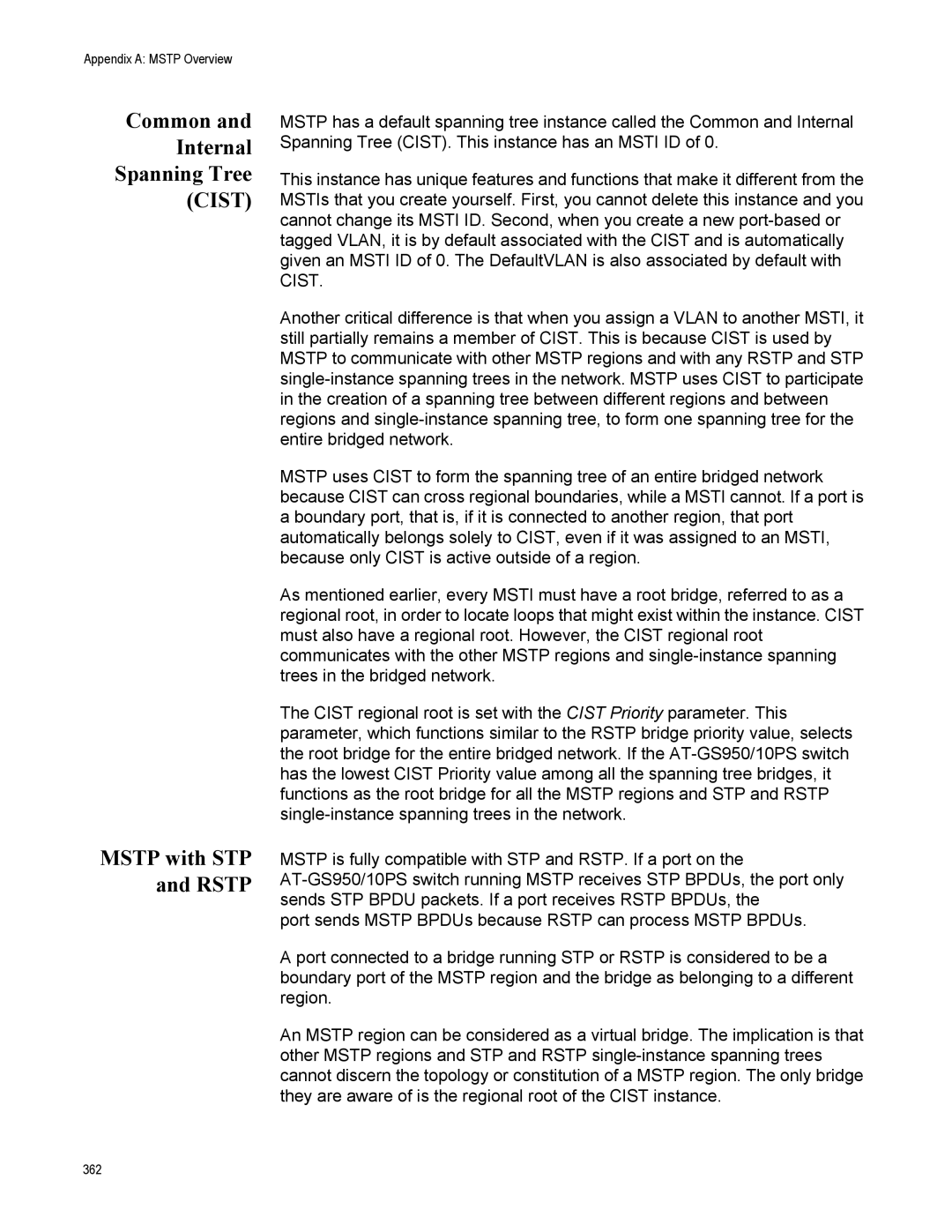Appendix A: MSTP Overview
Common and
Internal
Spanning Tree
(CIST)
MSTP with STP and RSTP
MSTP has a default spanning tree instance called the Common and Internal Spanning Tree (CIST). This instance has an MSTI ID of 0.
This instance has unique features and functions that make it different from the MSTIs that you create yourself. First, you cannot delete this instance and you cannot change its MSTI ID. Second, when you create a new
Another critical difference is that when you assign a VLAN to another MSTI, it still partially remains a member of CIST. This is because CIST is used by MSTP to communicate with other MSTP regions and with any RSTP and STP
MSTP uses CIST to form the spanning tree of an entire bridged network because CIST can cross regional boundaries, while a MSTI cannot. If a port is a boundary port, that is, if it is connected to another region, that port automatically belongs solely to CIST, even if it was assigned to an MSTI, because only CIST is active outside of a region.
As mentioned earlier, every MSTI must have a root bridge, referred to as a regional root, in order to locate loops that might exist within the instance. CIST must also have a regional root. However, the CIST regional root communicates with the other MSTP regions and
The CIST regional root is set with the CIST Priority parameter. This parameter, which functions similar to the RSTP bridge priority value, selects the root bridge for the entire bridged network. If the
MSTP is fully compatible with STP and RSTP. If a port on the
port sends MSTP BPDUs because RSTP can process MSTP BPDUs.
A port connected to a bridge running STP or RSTP is considered to be a boundary port of the MSTP region and the bridge as belonging to a different region.
An MSTP region can be considered as a virtual bridge. The implication is that other MSTP regions and STP and RSTP
362
